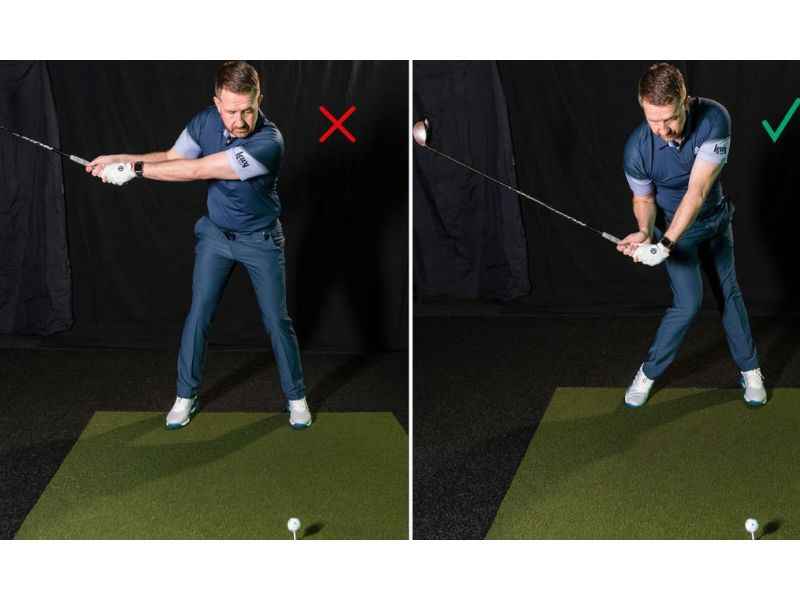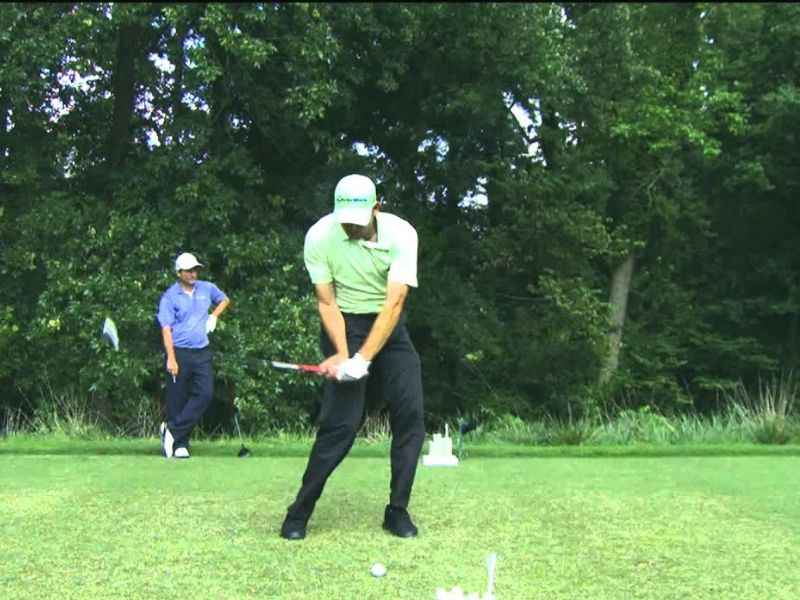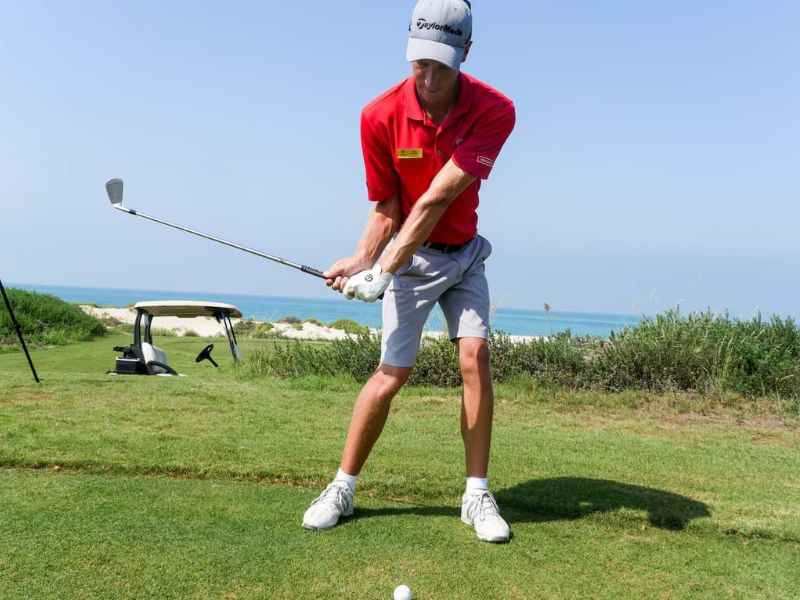Why do we need to use complicated words to describe something as simple as hitting a little white ball? Even though the term “lag” sounds strange, but adding it to your golf swing can help you get better. Lag will help you be more consistent and get you further.
Many golfers have heard the term “swing lag” but didn’t know what it meant. If you also don’t know what “swing lag” means, you probably aren’t using it in your golf swing, so you’re probably not getting as much distance, accuracy, or consistency as you could.
Everyone can add some valuable lag to their swings with a bit of practice and start seeing many benefits. Find out how to create lag in golf swing and its importance in the below segment.
Why does lag matter?

Lag is an integral part of your golf swing for several reasons, one of which is that it gives you much more clubhead speed than you would have without it.
Clubhead speed gives your golf swing distance because it means that your clubface is hitting the ball faster and transferring more of your swing energy to the ball. It makes the golf ball go farther.
Lag also makes it possible for the clubhead to reach the bottom of the swing at just the right time. It makes it easier to hit the ball consistently, and the more consistent you are on the golf course, the lower your scores will be.
So, if you care about distance, accuracy, and consistency, it would be a good idea to practice adding lag to your golf swing.
How to Create Lag in Golf Swing?

In a nutshell, lag is the deliberate trailing of the golf club during the downswing. Its name comes from the fact that the club lags or trails the hands leading the club through the downswing.
To add lag to your swing, keep the angle between your lead arm and the club shaft while you do your downswing. All your movement should come from turning your lower body during the swing.
3 Steps to Follow
Step 1
To do this, you start by putting your left hand on the grip of your shaft, just like you would for any other shot. Then, place your right hand on the post below that grip and bring the club to the top of your backswing. The angle between your leading arm and the club shaft should be about 90 degrees.
Step 2
Start the downswing with your lower body, giving the feeling of pulling the golf club through the swing. During the swing, your right hand should be the part that lets you keep the shaft pointing up as long as possible.
When you feel resistance on your left side, your lower body is doing most of the work, and the golf club is falling behind.
Step 3
When your left hand reaches your back leg on the downswing, the shaft should still be about 90° away from your leading arm. If you still have this 90° angle, your backswing and downswing were probably done right.
You’ve probably heard this from many different people, but it’s still true: the best way to get better at golf is to practice the game often. But that practice has to include the right parts of the golf swing. If you keep making the same mistakes when you practice at the range or on your home practice mat, you won’t get better soon.
3 Drills To Help You Create Lag In Your Golf Swing

I have shared three drills that will help you to create lag in your golf swing. Practice them often for better results.
Add Clubhead Weight
Creating lag in your golf swing may be tricky. Most exercises help you “feel it.”
Add weight to a mid-iron (7-iron is ideal). Instead of weight, use a towel. You want it heavy. Swing your weighted club without balls
The heavier club will help you leave it behind on your downswing.
Extra weight avoids early club casts and lag loss. Remove the weight after ten practice swings and make ten shots.
We know repetition teaches motion. Now that you’ve practiced lag with the weighted club, it will be simpler without it.
Impact Bag
New golf swing trainers include impact bags. Bags you hit with your club to enhance your impact position. Impact bags are the most pleasing golf swing trainer for lag. They’re compact and meant for golf clubs.
Impact bag teaches you to have your hands forward. A significant element of golf lag. It is very user-friendly.
Normalize your grip and center the impact bag in your stance.
Hit the sack. Hands should be ahead of the clubhead when hitting the bag.
Start with half swings, then full swings. When you have 10 minutes, get out your impact bag and practice lag.
Mirror Movement
Golf swing lag might be brutal to make but mirror swings are fun. Slowly imitate the swing. Watch your hand positioning and wrist movements during the swing. Learn muscle memory slowly. Create lag in your golf swing by swinging slowly.
Any teaching professionals use a mirror for this practice. Use one to practice if you can.
Take slow-motion swings and check your lag in the mirror. Try changing swing speeds.
Slowly speed up before attempting a full swing. Imagine swinging correctly.
How to make lag like a pro?

Some tips and techniques will help you do better in golf.
The first tip is to let your left side take control of your golf swing. You should feel like your right arm and shoulder are just hanging on to the golf club for support and aren’t doing any of the guiding or leading. When you let your left side control all the movement, it will be much easier to get a lot of lag in your golf swing.
Have the conscious swing think that your right side is just along for the ride and only supports the club, not doing any work. Make sure you have a light grip because this can make or break your golf swing.
When you have a soft grip on the club, you’ll be able to keep your lag angle for longer and then release it at just the right time. You should hold the club tightly enough to control it and not so tightly that it gets in the way during the backswing or downswing.
It’s also essential to turn your shoulders a full 90° when trying to get more distance on your shots. Even if you’re not very flexible, you should be able to turn your shoulders a full 90° to help add space to your shots.
Lastly, it would help if you tried to make the swing arc as wide as possible by ensuring your left and right arms are straight during the backswing and takeaway. Even if you’re small, this will work if you can keep your left arm straight during the swing.
FAQs – How to Maintain Lag in a Golf Swing
Does losing weight change how you play golf?
Undoubtedly, getting rid of that extra weight (especially around the middle) will help you improve your swing, and getting stronger will give your drive more power.
How do I keep my golf lag downswing?
To make your golf swing have more lag, you need to do three key things:
• Relax your arms and wrists.
• Hinge your wrists in the right way during your backswing
• Reach your maximum hand speed earlier in your downswing.
Putting these things together will make more lag.
How fast should a seven iron be swung?
The average golfer will hit a seven iron at about 75 miles per hour. This number can change depending on whether the club is made of steel or graphite and how heavy it is.
The seven iron will go farther if you swing it faster. If you can swing it about 85 miles per hour, you can hit about 165 yards.
Final words
Lag is fierce for many beginning golfers to understand because they must imagine the golf club trailing behind their hands and being pulled through the downswing to speed up the clubhead.
But if you can master the technique, you will almost certainly be able to drive the ball farther, hit it more accurately, and play more consistently. So you’ll probably start to enjoy the game a lot more than you ever have before.
